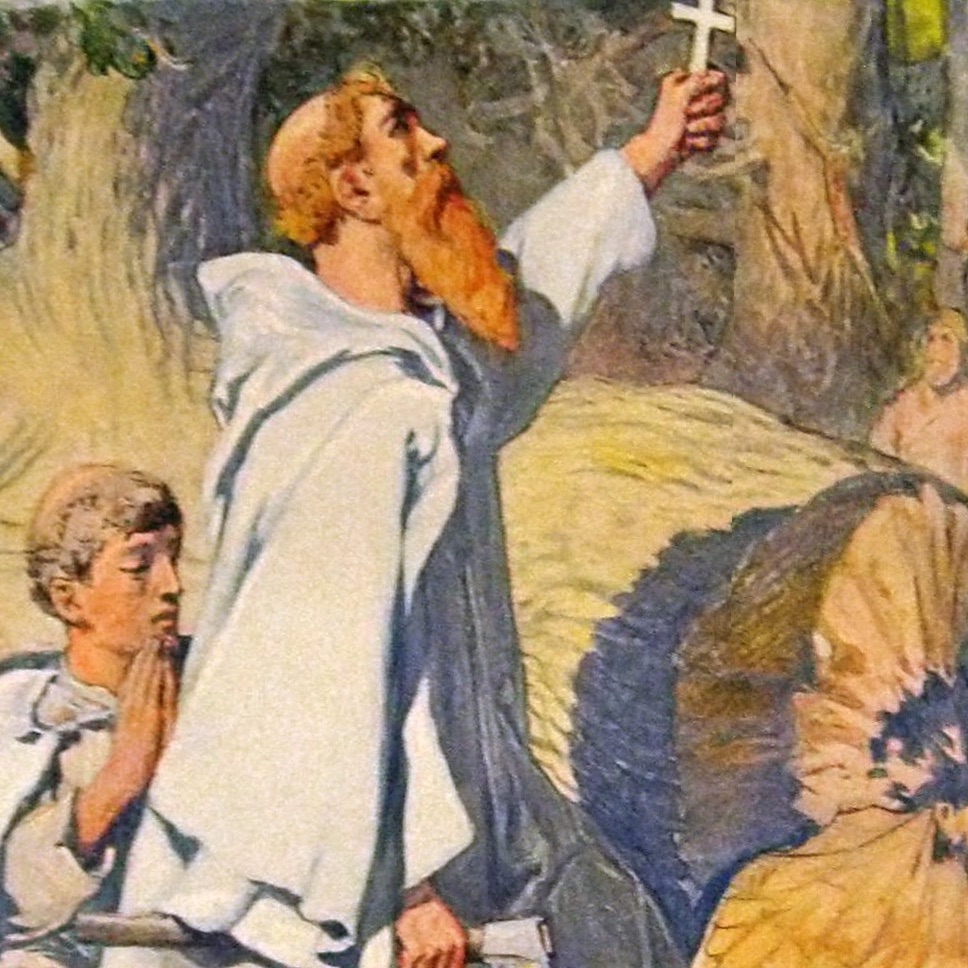Howard Peskett made some mission related comments when writing on Deuteronomy chapter 13 in Scripture Union notes. Howard wrote: “Missionaries have often faced the difficult question of how to bring about a separation between the converts new loyalty to Jesus and their old religion. Boniface cut down Donar’s oak; the demon gates of an Akha village in North Thailand may be broken down and burned.” It took me a little digging to find out what Howard was talking about!
My first reaction was to ask who Boniface was and why the forestry vandalism? Boniface was a missionary to the Germanic tribes during the 8th century. He was born in England around the year 675 and dedicated his life to spreading Christianity throughout Europe. His encounter with the sacred oak tree known as Donar’s Oak was a significant moment in his work amongst the German people. According to legend, the oak tree was dedicated to the pagan god Thor (known as Donar in Germanic mythology) and was located near the town of Fritzlar in what is now modern-day Germany. To demonstrate the power of Christianity and to confront the pagan beliefs, Boniface decided to cut down the sacred oak tree. The pagan onlookers expected him to be killed on the spot for cutting down the sacred (to them) tree.
According to the story, as Boniface raised his axe to strike the tree, a strong wind blew and the oak split into four parts. Inside the oak, Boniface discovered a small fir tree, which he declared was a sign of the Christian faith. This act convinced many witnesses to convert to Christianity, as the event enabled them to see how the Lord protected His servant and they therefore came to understand that Jesus Christ is Lord.
Whether the story about the small fir tree is true or not, I don’t know. It may well be a legend. My sense is that an even more profitable task is to learn from the life of this courageous early missionary – and walk in the same kind of obedience that he showed in order to reach the lost with the good news about Jesus. Boniface gave up being an abbot to devote his life to the conversion of the Germanic tribes. He built a chapel from the wood of the cut-down tree at the Donar site. He never returned to England. Boniface still longed to reach another Germanic group, the Frisians. In 754 he set out for Frisia. He baptised a great number but was then attacked by a group of robbers and martyred. This early missionary shared the apostle Paul’s calling in Acts 9:15-16: “Go, for he is a chosen vessel of Mine to bear My name before Gentiles. I will show him how many things he must suffer for My name’s sake.”
Howard’s other reference is to the Akha people. The internet informs me that the Akha “have a rich cultural heritage with unique customs, rituals, and beliefs. They practice animism and ancestor worship, and their rituals often involve the veneration of spirits and the seeking of spiritual guidance. In recent years, many Akha villages in Thailand have opened up to tourism, offering visitors the opportunity to experience their way of life first-hand. Tourists can stay in traditional home-stays, participate in cultural activities, and learn about Akha traditions, such as herbal medicine, traditional cuisine, and traditional dances. It’s important to approach Akha villages with respect and cultural sensitivity, as they are real communities with their own traditions and way of life. Engaging in responsible and sustainable tourism practices, such as supporting local initiatives and respecting local customs, can contribute to the well-being of the Akha people and their villages.”
The tourist instruction then is that responsible people will contribute to the well-being of these people by leaving them unchanged in their veneration of spirits. But Howard says “the demon gates of an Akha village in North Thailand may be broken down and burned.” Are missionaries then cultural vandals or bad tourists? The answer to that question depends on how we define “the well-being of the Akha people.” If we believe that Jesus is the only way, if we believe that this kind of idol worship will lead to an eternity without Jesus Christ, if we have seen the radical change and improvement that the Gospel brings to such people groups (and has in some cases already brought), why would we leave them as they are? We can love and respect them best by sharing the Good News culturally and sensitively with them.
Missionary work was not easy for Boniface nor is it easy today. It will bring conflict with some national governments (for example Communist China with its 400 such people groups) and also with the money-making tourist organisations described in the comment above. But nobody ever said that the Jesus revolution was ever going to be a conflict-less tea party!
Painting: Bonifacius (1905) by Emil Doepler


